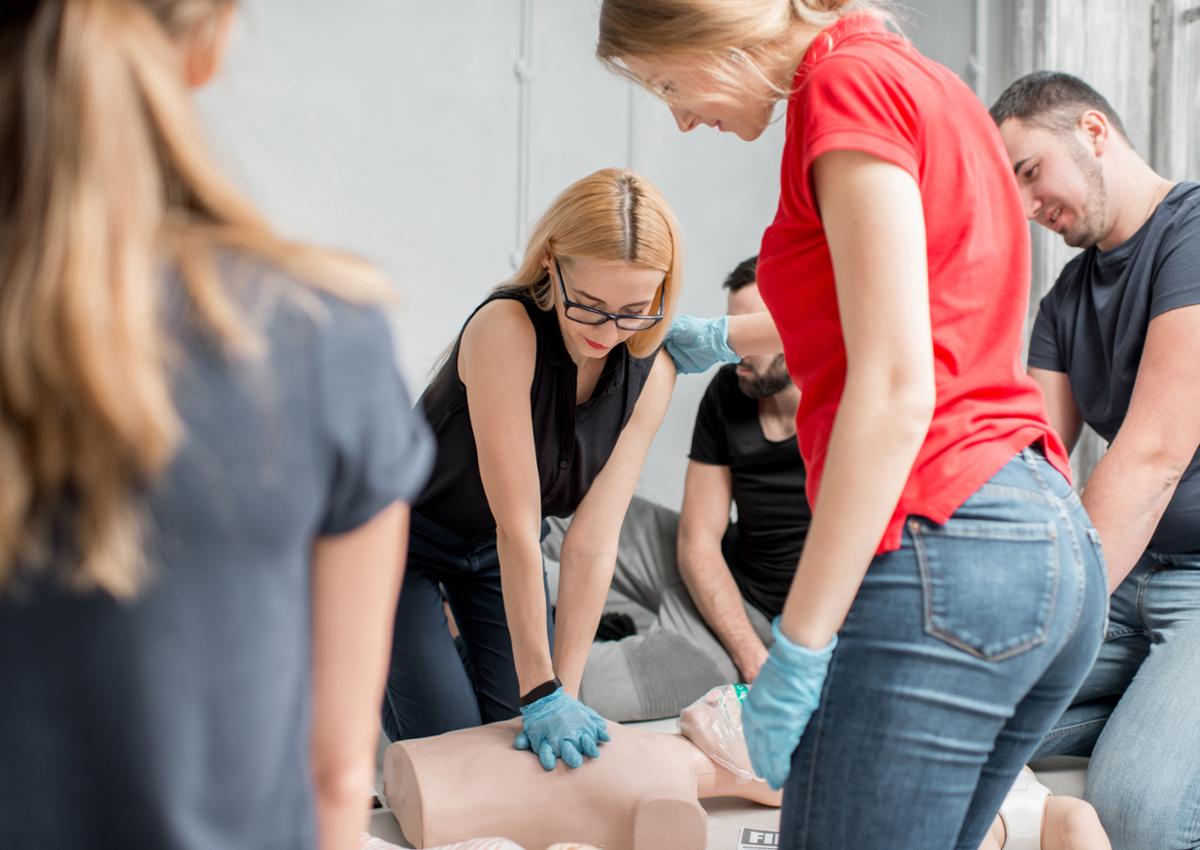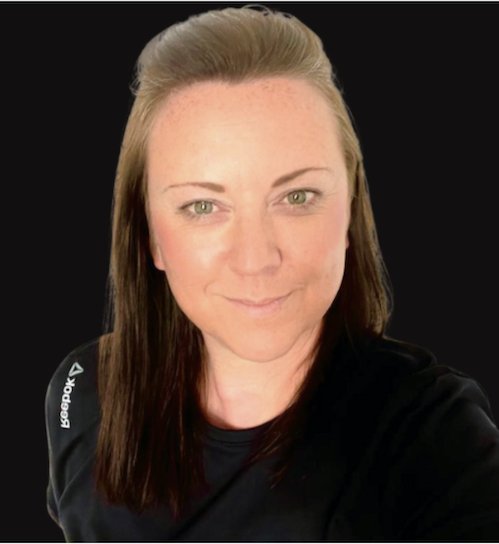In January this year, Damar Hamlin, a 24-year-old NFL player for the Buffalo Bills had a cardiac arrest after making a tackle. In a packed stadium, thousands watched as medical workers performed CPR and used a defibrillator to restore his heartbeat. Luckily, Damar was saved in hospital, but many others like him are not so lucky.
In the UK there are over 30,000 out-of-hospital cardiac arrests (OHCA) a year where emergency medical services attempt to resuscitate the victim. However, according to the British Heart Foundation, survival rate is low – just one in 10 people in the UK survive an OHCA. In the US, the number is 356,000 and the survival rate is the same at 10 per cent.
Although regular exercise helps strengthen the heart and lowers the risk of cardiovascular problems long-term, it’s true that in some people, strenuous exercise can increase the immediate risk of heart attack and sudden cardiac arrest.
Common advice for improving heart health is to get more exercise but what kind and how much? Amid a regular stream of news coverage such as Hamlin’s cardiac arrest, it can be difficult for the average person to feel reassured.
The scared sedentary
Dr Dane Vishnubala, chief medical officer at Active IQ says cardiac statistics shouldn’t scare people into being sedentary. Inaccurate myths about exercise and the heart have circulated for years, sometimes having a negative impact on people’s health.
Given fitness professionals are trusted with our health and wellbeing – especially in a gym environment – a common question Vishnubala encounters is around the responsibility of UK fitness operators to help prevent cardiac issues in gyms. Are PTs equipped to train people with heart conditions and would the fitness team at a gym be able to react quickly enough in the event of a cardiac arrest to influence the outcome?
What’s important, says Vishnubala, is ensuring operators and fitness professionals are qualified to train people safely in the benefits of exercise – as even for people with coronary artery disease or peripheral vascular disease, the benefits of exercise far outweigh the risks.
Training and Practice
In professional sports, athletes are given regular electrocardiograms (ECG) to determine their risk of sudden death from a heart problem. An ECG records electrical signals in the heart and is a common and painless test used to quickly detect heart problems and monitor the heart’s health.
For professional athletes, this is an important part of their preparation and training, but for the average gym-goer, this level of assessment when they sign up for a membership is not practical and while new members may fill out a Physical Activity Readiness Questionnaire (PAR-Q), any answers that indicate a possible heart condition will simply have them signposted back to a GP.
“For fitness professionals, it’s difficult to predict if a member will have a cardiac event in your facility,” says Vishnubala. “The best thing health club operators can do is ensure their team members are appropriately qualified and prepared to react in the event of an emergency.”
The exact numbers and training will look different for every facility, but Vishnubala recommends having as many staff members first-aid trained as possible. High-quality qualifications, such as Emergency First Aid at Work from organisations such as Active IQ, YMCA Fit and the Red Cross, are examples of training that provides people with the skills they need to respond to first aid situations and administer first aid in the workplace.
“If you’re a PT and something happens where you need to find a trained first aider to come and help, you’re losing time. For every minute’s delay in starting CPR, the success rate drops quickly. What if the first-aid trained staff member is tied up or unavailable, what would you do? If you’re a self-employed PT, this is even more challenging, as you’re on your own,” says Vishnubala.
“Of course, it may not be possible to have every single staff member trained, but it’s about looking for ways to mitigate risks in the event of an emergency.”
Simulating Emergencies in Real-Life
Reacting quickly in an emergency is critical and even if staff members hold the highest qualifications, skills are undeniably lost without regular practice. To keep skills sharp, Vishnubala recommends gyms conduct regular training sessions that simulate real-life emergencies to ensure staff members know how to react quickly if the worst were to happen.
“Most first-aid qualifications require renewal after three years,” Vishnubala explains. “If you haven’t practiced those skills since the day you received your qualification, you’ll forget them. It’s important for gyms to consider more regular internal training. This could be held monthly by getting together and running real-life scenarios. Imagine someone drops while running on a treadmill. What do you do? Who calls for help? Do your team members know where the defibrillator is and how to use it? Practise these drills so things run smoothly and roles and responsibilities are clear within the team. Quick decisions and reactions can mean the difference between life and death.”
Vishnubala says it’s important to mix up the scenarios and while learning the basics of CPR on a dummy is important, real life rarely happens exactly like that, so running through a variety of emergencies can help staff feel empowered and prepared.
“Many people don’t realise that CPR, when performed correctly, is hard work. After one or two sets of 30 compressions, you’ll be tired, so you’ll need someone else to step in to continue to ensure high-quality compressions until an ambulance arrives. It’s therefore important to practise these scenarios as a team.”
Can heart rate monitors help?
Technology has made data experts of many of us, especially when it comes to exercise. Many group exercise classes now encourage the use of heart rate monitors while working out and these can tell a user a lot about their exertion levels, recovery and in some cases, their general health.
However, according to Vishnubala, most wearables can’t identify the likelihood of the wearer having a cardiac event while exercising.
“Regrettably, if you have a heart condition that will be exacerbated by strenuous exercise, a heart rate monitor won’t provide any reliable warning signs,” says Vishnubala. Heart rate monitors are useful but using something such as rate of perceived exertion (RPE) can be just as useful in ascertaining approximate intensities.
Instead, Vishnubala encourages people to know the warning signs. Dizziness, fainting, chest pain, palpitations, significant breathlessness as well as a family history are all relevant. Should someone have any of these symptoms they should seek medical advice immediately. If they have a family history of heart problems or known underlying health conditions, they can talk to their doctor, as they may be able to refer them for further tests. If not, they need to be aware of how they’re feeling. If they have a temperature or you feel unwell, it’s wise to avoid strenuous exercise, as the heart will take the most strain. If they’ve recently recovered from illness – especially COVID – they could be at risk for myocarditis, a condition that causes inflammation of the heart. This is especially true of young men who have had the Moderna or Pfizer vaccine (www.hcmmag.com/vaccineheart).
“The notion of coming to the gym when you’re feeling unwell to ‘sweat it out’ is potentially dangerous,” says Vishnubala.
Exercise keeps your heart healthy
Stories of sudden cardiac arrests in young and seemingly healthy people can stir up fear, but the fact is, exercise helps keep your heart healthy. In fact, if you’ve suffered a cardiac event, exercise is often recommended as a way to recover. While it can be difficult to predict a cardiac event, the best course of action is for fitness operators to ensure they are properly trained and well-practised, should an emergency happen.
























































